Brazilian Food Dishes: Basic Overview
Common Ingredients
Common Cooking Methods
Courses
Meals
Key Taste
Eating Etiquette
Meal Presentation
Culinary Festivals
Influence and Fusion
Popular Types of Brazilian Dishes
-
Desserts
Brazilian desserts are a vibrant celebration of sweetness and texture.
They range from creamy, rich custards to light and airy cakes.
-
Snacks
Snacks in Brazilian cuisine come in a variety of flavors, from savory to sweet.
They often incorporate local ingredients and are designed to be eaten on the go.
-
Stews
Brazilian stews are hearty and flavorful, combining a mix of meats, beans, and vegetables, slow-cooked to perfection.
-
Fried Dishes
Fried dishes in Brazil are celebrated for their crispy exteriors and juicy interiors, featuring everything from meat to seafood and vegetables.
-
Grilled and Barbecued Dishes
Grilling and barbecuing are cherished cooking practices in Brazil, where the aroma of charred meats fills the air during social gatherings.
This method highlights the natural flavors of the ingredients, with a focus on simplicity and the communal joy of sharing a meal cooked over an open flame.
Brazilian food is a rich tapestry of flavors and ingredients, reflecting the country’s diverse cultural heritage.
It incorporates influences from delightful European dishes, Amerindian cuisine, African culinary pleasures, and Asian treats, varying greatly by region due to Brazil’s vast size and mix of native and immigrant populations.
Key ingredients native to Brazil include cassava, açaí, cumaru, and tucupi, while immigrants have introduced their traditional dishes, adapting them with local substitutes.
European immigrants brought wheat-based diets, wine, leafy vegetables, and dairy products, while Africans contributed significantly, especially in coastal states.
Common ingredients across the country include root vegetables like manioc, fruits such as açaí and mango, and a variety of meats and seafood.
Come along to explore the fascinating regional cuisines of Brazil along with beverage options to enjoy the dishes.
30 Most Popular Brazilian Dishes with Filters
Discover the top 30 Brazilian specialties curated for your exploration based on their popularity. Furthermore, explore these culinary delights by sorting them alphabetically by main ingredients, taste profiles, cooking methods, dish types, meal categories, and their presence around the globe.
Dive into the interactive filtering system for an engaging journey through a variety of dishes, including traditional, national, street, and exotic choices.
Coxinha
- Street Food
- Traditional
Coxinha is a Brazilian fried dish regarded as one of the best appetizers in the world. First made in São Paulo in the 19th century, the dish is made by shredding the chicken, shaping it, and frying it.
The crunchy dish is a popular street food with a crunchy crust and creamy interior. As for the meaning, coxinha is translated to “little thigh” referring to the drumstick shape of chicken thighs.
Arrumadinho
- Traditional
Arrumadinho is a flavorful appetizer that originated in Pernambuco, a state in the northeast of Brazil. Its name is derived from a Portuguese word, which means “to arrange neatly.”
This dish consists of dried beef, beans, farofa (a toasted cassava flour mixture), and mixed vegetables. The dish can be eaten as it is, or mixed according to one’s preference.
It is often accompanied by hot sauce, vinaigrette, or garlic mayonnaise with other elements varying depending on people’s liking. At first, every ingredient is arranged separately on the dish for mixing in any way that you prefer.
Pastel de Queijo
- Street Food
- Traditional
Pastel de queijo is a thin, crispy Brazilian pastry shell filled with melted cheese, usually mozzarella or a blend of cheeses. It is one of the many variations of pastel, a deep-fried dough snack that has different fillings, such as meat, chicken, shrimp, hearts of palm, or chocolate.
Often served with hot sauce or garlic mayonnaise, it’s shaped into triangles, rectangles, or half-moons. Pastel de queijo is now a popular street food and appetizer in Brazil, especially in São Paulo, where it is a common sight at the feiras (street markets) and pastelarias (pastel shops).
Molho a Campanha
- Traditional
Molho a campanha is a Brazilian dish with a stronger vinegar flavor, created using diced tomatoes, bell peppers, onions, olive oil, white wine vinegar, salt, pepper, and cilantro.
It is a common side dish for Brazilian barbecues, especially with grilled meats, but it can also be eaten with bread or fried yucca as a snack.
Mandioca Frita
- Street Food
- Traditional
Mandioca frita is Brazilian fried cassava or yuca sticks, which are also known as aipim frito or mandioca frita in Portuguese. To make mandioca frita, the cassava or yuca root is peeled, cut into pieces, boiled until tender, and then deep-fried in oil until crispy and golden.
The fried sticks are seasoned with salt and served hot, usually with ketchup, garlic mayonnaise, or other sauces. These fried cassava are a popular snack and appetizer in Brazil, especially in street markets and pastel shops.
Feijoada
- National
- Traditional
Feijoada is a stew of black beans and various kinds of pork and beef, such as sausage, bacon, ribs, and ears. It is a thick stew cooked for a long time until the beans and meat are tender and flavorful.
Often served with rice, fried cassava flour, greens, and oranges, the stew is a traditional and popular dish in Brazil. The stew is usually eaten on Wednesdays and Saturdays as a special meal with family and friends.
With influences from the Portuguese and African cuisines, it is considered the national dish of Brazil.
Carne de Sol
- Traditional
Carne de sol is a meat specialty from Brazil, featuring sun-dried beef that has been salted and cured for a few days.
It is a traditional dish from the Northeastern region of Brazil, where it is influenced by Portuguese and indigenous cuisines. The dried beef is usually served with rice, beans, and salad, or used as a filling for other dishes.
Carne de sol means “sun meat” in Portuguese, and it is a delicious and tender dish that preserves the flavor of the beef.
Churrasco de Picanha
- Traditional
Churrasco de picanha is literally the Brazilian style of barbecue, featuring grilled slices of picanha, a tender and flavorful cut of beef that comes from the top of the rump.
Picanha is seasoned with coarse salt or a Brazilian steak seasoning blend, and skewered on metal rods. Locals cook these cuts over charcoal or wood fire and slice them thinly before serving.
As a traditional dish from the Southern region of Brazil, it is now a popular dish in Brazil, especially at outdoor parties and Brazilian steakhouses.
Arroz Carreteiro
- Traditional
Arroz carreteiro is a rice dish in Brazil created by the gauchos (horsemen) using rice and beef that they bring along when going through the plains.
By drying the beef, the meat possesses a long shelf life. People also call it “Wagoners’ rice” to associate it with its city of origin.
Nowadays, it is also made with leftover beef to avoid wasting food. It is usually served with boiled eggs, salad, or farofa (toasted cassava flour).
Cachorro Quente
- Street Food
Cachorro quente is the Brazilian term for hot dog, but it is not just a sausage in a bun. The dish is a loaded sandwich with a variety of toppings.
Commonly, cachorro quente is cooked in a tomato sauce with vegetables and cheese and can be topped with potato sticks, Parmesan cheese, ketchup, mayonnaise, and other sauces.
These hotdog buns are a popular street food and snack in Brazil, especially in São Paulo.
Moqueca
- National
- Traditional
Moqueca is a Brazilian seafood stew, incorporating vegetables, and spices, cooked in a clay pot with coconut milk or olive oil. The dish was heavily influenced by African and Portuguese cuisines over time, often enjoyed as a lunch dish.
The hearty stew has different variations depending on the region and the ingredients used. Ideally, the stew employs shrimp, fish, vegetables and is flavored with coconut milk and tomato paste.
Vatapá
- Traditional
Vatapá is a creamy paste of bread, shrimp, coconut milk, peanuts, and palm oil in Brazil. Made by the Afro-Brazilians, the dish was introduced by the Yoruba people who were brought to Brazil as slaves.
It is a typical dish of Bahia, a state in the northeast of Brazil, where it is often eaten with acarajé, a fried black-eyed pea fritter. Vatapá can have different variations, but it is usually served cold for a rich and spicy flavor.
Farofa
- Traditional
Farofa is Brazilian cassava coated with a toasted flour mixture that can be made from cassava or corn. As a dish made by the Tupi-Guarani people, its name comes from the Portuguese word for flour (farinha).
The dish is best enjoyed with grilled meats and stews, but it can also be eaten as a main dish. Farofa is cooked with butter and olive oil, and seasoned with onion, garlic, and other ingredients, such as bacon, eggs, nuts, or herbs.
Just a heads up, farofa has a sandy texture and a nutty flavor.
Barreado
- National
- Traditional
Barreado is a stew in Brazil combining meat, bacon, and spices, cooked in a clay pot that is sealed with a paste of cassava flour, ashes, and water. The slow-cooked dish for tender and flavorful meat takes about 20 hours to prepare.
For serving, barreado comes with a thick sauce made from the cooking liquid and cassava flour, called pirão, and also with rice, oranges, and bananas. Barreado originated from the Azores islands, where it was part of a 300-year-old ritual that involved cooking the dish in a pit.
The stew specialty was brought to Brazil by the Portuguese settlers who arrived on the coast of Paraná in the 18th century, and it became a regional specialty of the city of Guaraqueçaba.
Acarajé
- Street Food
- Traditional
Acarajé is a deep-fried fritter in Brazil made of black-eyed peas, onion, salt, and pepper. These streetside fritters are stuffed with shrimp, tomato, and hot pepper, and sometimes with other sauces or fillings.
In the state of Bahia, acarajé is especially popular. Acarajé is usually eaten hot or cold, which refers to the spiciness level of the pepper, not the temperature of the fritter.
In terms of meaning, acarajé means “I have acara” in Yoruba, a language spoken by some of the Nigerian slaves who brought the dish to Brazil.
Pato no Tucupi
- National
- Traditional
Pato no tucupi is a duck stew of Brazil that originated in the northern part of the country and is incredibly popular in the cities of Belem and Santalem.
To make the duck stew, people cook duck with tucupi, which is the yellow liquid from manioc root in the Amazon jungle. The liquid is not safe for raw consumption, so people have to boil it for 3-5 days before serving.
Once cooked, the concoction provides a tangy and citrusy taste paired well with duck meat. It is a festive dish that is served in the Círio de Nazaré, the largest festival in Brazil.
Bauru
- Traditional
Bauru is the specialty of São Paulo in Brazil, made in the 1930s when a law student named Casemiro Pinto Neto came to the Ponte Chic restaurant and ordered a unique sandwich.
Since then, it has become a famous dish and continues to expand its popularity to the entire state. The sandwich comes in the form of 2 slices of crispy bread filled with ham, cheese, pickles, and tomatoes.
The difference between Bauru and ordinary sandwiches is that the bread is not soft at all.
Bolo de Rolo
- Traditional
Bolo de rolo is a Brazilian dessert that consists of a thin, crispy pastry shell filled with sweet guava paste. Coming from the state of Pernambuco, it has many layers of pastry and guava, which give it a spiral shape.
As a national dish in Brazil, it is protected as a cultural heritage of Pernambuco. Bolo de Rolo is usually served sliced, with a sprinkle of sugar on top.
Pamonha
- Traditional
Pamonha is a paste of sweet corn and coconut milk in Brazil, wrapped in corn husks and boiled. The dish comes from the Minas Gerais of the Goiás State in Brazil, but its name comes from the Tupi-Guarani word for sticky.
Also known as the Brazilian version of tamale, pamonha can be sweet or savory, depending on the filling or the sauce. As a common dish in Brazil, it is eaten with cheese and sausage.
Sagu
- Traditional
Sagu is a Brazilian dessert of tapioca pearls cooked in red wine, sugar, and spices. The dish comes from the south of Brazil and is notable for its vibrant purple color and chewy texture.
Often served with a creamy sauce or ice cream, sagu can also be made with milk or fruit juice, but the wine version is the most popular.
Quindim
- Traditional
Quindim is a dessert in Brazil that is made of egg yolks, sugar, and coconut. Baked in a water bath and has a bright yellow color, the dessert provides a custard-like texture.
It is often served with whipped cream or ice cream. Instead of small serving, quindim is sometimes baked in a large round mold called quindão for cutting into slices later on.
Brigadeiros
- Street Food
- Traditional
Brigadeiros are a Brazilian chocolate dessert made using condensed milk, cocoa powder, butter, and chocolate sprinkles. They are small, round, and chocolatey and served in paper cups.
Named after a Brazilian brigadier who ran for president in 1945, these treats were sold by his female supporters. Brigadeiros can have different flavors and toppings, such as coconut, nuts, or fruit.
Açaí na Tigela
- Street Food
- Traditional
Açaí na tigela is a fruity treat in Brazil that makes use of frozen and mashed açaí berries, which are a type of palm fruit that grows in the Amazon rainforest.
With a dark purple color and a creamy and earthy taste, the mixed treat offers a hint of sourness. The dish is often served in a bowl or a glass and topped with granola, banana, and other fruits.
Açaí na Tigela is a popular snack in Brazil, especially in the northern and coastal regions, where it is sold in street stalls and juice bars.
Cocada
- Street Food
- Traditional
Cocada is a sweet treat simply made from milk and coconut, created by a group of ethnic African people who moved to the northeast region of Brazil during the colonization period.
This dessert is often sold in the streets, even featuring a black version made using brown sugar and burnt coconut.
Beiju de Tapioca
- Traditional
Beiju de tapioca is a Brazilian crepe made of tapioca starch, which is derived from cassava or manioc root. People usually fill these crepes with sweet or savory ingredients, such as bananas, cheese, chocolate, coconut, or meat.
In different regions of Brazil, beiju de tapioca is also known as tapioca, beiju mole, or tapioquinha.
Beijinho de Coco
- Traditional
Beijinho de coco are small balls of coconut, butter, and condensed milk, covered with more coconut and sometimes a clove from Brazil.
It is a variation of the chocolate brigadeiro, another Brazilian sweet.
These “coconut little kisses” are a cute and delicious dessert that is popular for children’s parties and other celebrations.
Curau de Milho
- Traditional
Curau de milho is a sweet treat made from fresh corn, sugar, and milk, often served during Festa Junina, a Brazilian festival. In Caruaru, a town in northern Brazil, people make a very large bowl to celebrate the days, using up to 4,500 ears of corn in 2008.
With a custard-like texture and a deliciously rich and sweet taste, curau de milho is best enjoyed both warm and cold.
Paçoca
- Traditional
Paçoca is a Brazilian candy of ground peanuts, sugar, salt, and sometimes flour. Coming from the southeast of Brazil, it is a specialty of the rural and local cuisine.
Paçoca is a common treat during the Festa Junina, a winter festival that celebrates Brazilian culture and history. Thanks to a crumbly and sweet texture, it is shaped into squares or cylinders.
Bem Casado
- Traditional
Bem casado is a traditional Brazilian and Portuguese cookie combining two round sponge cake layers filled with dulce de leche or other sweet cream. It is usually wrapped in colorful crepe paper and ribbon, and served as a favor at weddings and other celebrations.
As for the meaning, the name means “happily married” or “well married”, and it symbolizes the union and harmony of the couple. Bem casado is derived from the ancient Arab alfajor, a cookie sandwich with honey or jam filling.
The Portuguese version, called casadinho, has a denser texture than the Brazilian one, which is softer and lighter.
Pão De Queijo
- Traditional
Pão de queijo is a small, round cheese bread made from cassava flour, eggs, cheese, and milk. It originated in the state of Minas Gerais, Brazil, where cheese production is abundant.
These small balls have a crunchy crust and a chewy, cheesy center. It is a common snack and breakfast food in Brazil and can also be found in other South American countries with different variations.
It is usually baked in small balls, but can also be boiled or fried before being served with coffee or cachaça, a Brazilian liquor.
What Are the Regional Cuisines of Brazil?
With a vast land and many regions, Brazil has adapted its cuisine with many differences in flavors and textures. Here are some regions of cuisine in Brazil:
| Region | Characteristics |
|---|---|
| Northern (Amazon) | Influenced by indigenous cuisine, it focuses on fish, fruits, and cassava. |
| Northeast | A mix of African, Indigenous, and Portuguese influences with staples like vatapá, acarajé, and seafood. |
| Central-West | Features indigenous and neighboring countries’ influences. |
| Southeast | Known for feijoada and a variety of dishes from Rio de Janeiro, São Paulo, Espírito Santo, and Minas Gerais, including pastel. |
| South | Gaúcho traditions with a focus on meat-based dishes. |
Also, you should not miss the chance to uncover some interesting pairings to have with Brazilian dishes in the form of beverages.
What Beverages to Pair with Brazilian Dishes?
Pairing Brazilian beverages with Brazilian dishes enhances the dining experience by complementing the flavors and textures of the cuisine. Here’s a guide to some popular Brazilian beverages and the dishes they pair well with:
After knowing about the well-known dishes of Brazil, make sure to leave your thoughts on these specialties and share them with other people. Thanks for spending your time reading.




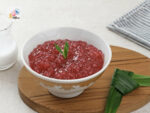

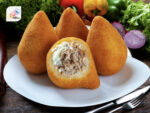


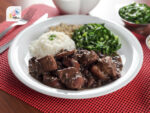
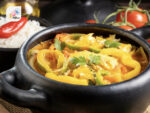
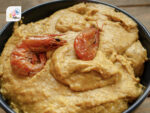



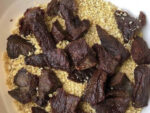
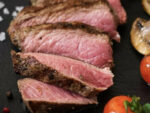
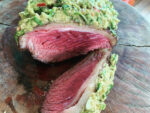

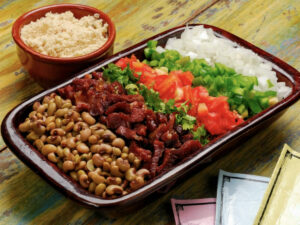
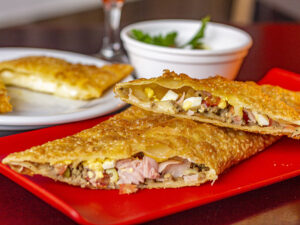
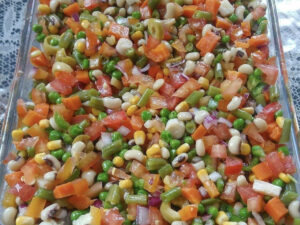
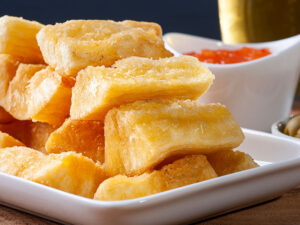
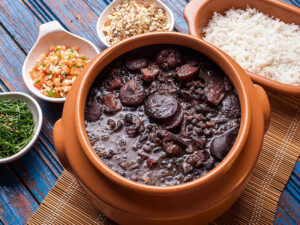
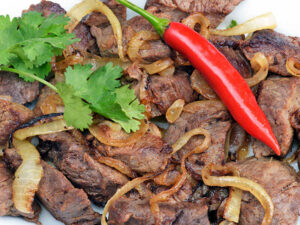
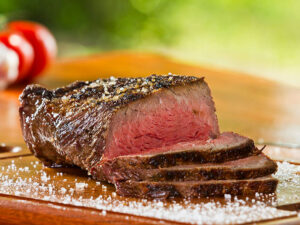
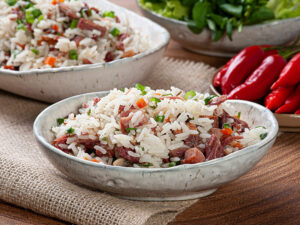
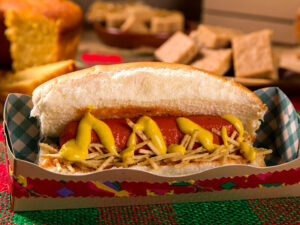
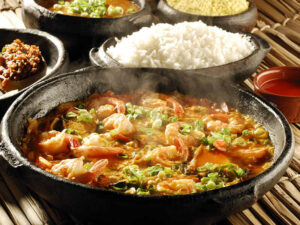
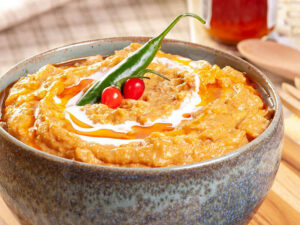
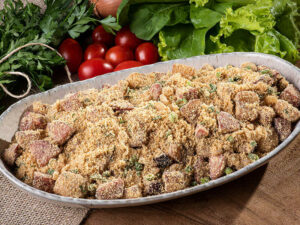
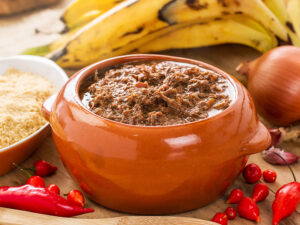
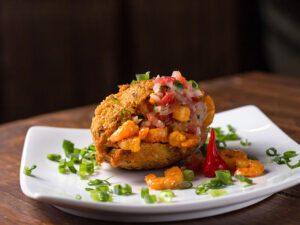
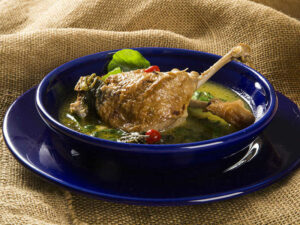
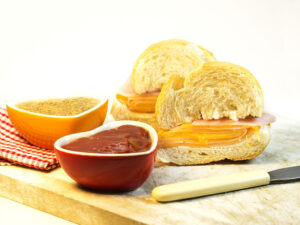

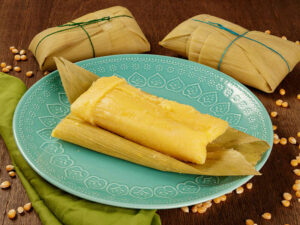
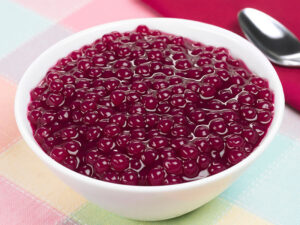
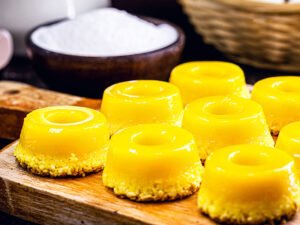
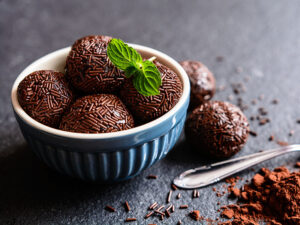

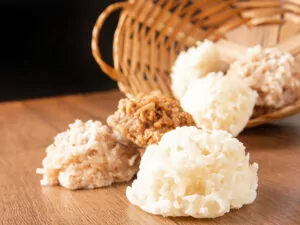
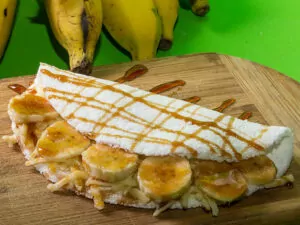

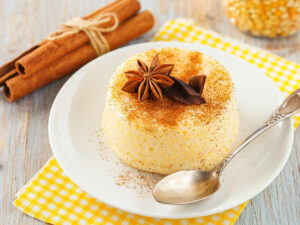


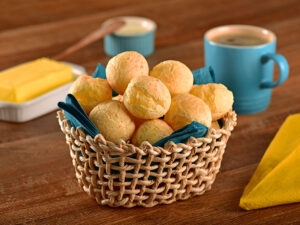

Jamie Scott
Editor in Chief, Senior Content Writer
Expertise
Home Cooking, Meal Planning, Recipe Development, Baking and Pastry, Food Editor, Cooking-video Maker, Western Food Evaluation Expert
Education
Le Cordon Bleu College of Culinary Arts
Local Community College, New York, NY
Jamie Scott is a skilled culinary expert and content creator specializing in Western cuisine. With over 15 years in the culinary field and formal training from Le Cordon Bleu, Paris, Jamie deeply understands how to blend nutrition with delicious flavors. His passion for cooking matches his commitment to making healthy eating accessible and enjoyable.
On Fifteen.net, Jamie brings a fresh perspective to classic dishes and beverages, offering readers insightful recipes, cooking tips, and a fresh view on meal planning that emphasizes taste, health, and simplicity.